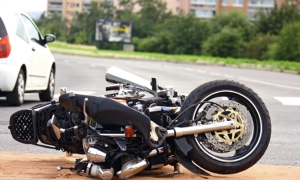Obeying the motorcycle and traffic laws of your state can help you to avoid accidents and legal trouble potentially. In particular, when you follow the rules, it becomes easier for the surrounding drivers to predict your actions. That assists in preventing collisions related to turns, lane changes, and lack of visibility. Even if you are a seasoned motorcyclist or your first time riding, it is critical to know your state’s motorcycle laws and regulations.
Motorcycle helmet requirements
Most countries around the world have passed universal helmet laws to govern their motorcyclists. In particular, both passengers and riders are expected to wear approved helmets from their ministry of transport. Due to that, a rider can receive a ticket for carrying a passenger or riding without a helmet.
Traffic laws
Motorcycles should obey the applicable traffic and road laws the same way motor vehicle drivers do.
Wear eyewear or have a windshield
Your eyesight plays a critical role not only for your safety but also for other people around you. Therefore, most states mandate that riders should have a windshield or protective eyewear.
Limit to two bikes per lane
Motorcycles are enough for people to ride side-by-side in one lane. That means motorcyclists can share lanes.
No splitting lanes
Since motorcycles are small, motorcyclists can split lanes and move through traffic. That means motorcyclists can ride the white line which divides the traffic lanes. However, most countries forbid lane splitting.
No drug use
Driving a bike while impaired or intoxicated by illegal drugs, alcohol, and certain addictive prescription medications is illegal.
Traffic signs
Motorcyclists should follow all traffic stoplights, signals, and signs. They should yield the right way to pedestrians, bicyclists, and drivers when applicable. Further, they need to obey the required speed limit and stop when making turns.
Motorcycle registration
Motorcycle owners should register their bikes with relevant authorities. After receiving proof of auto insurance, they will receive a license attached securely to a bike in a visible position.
Safety equipment requirements
Most states have motorcycle laws that mandate riders to have critical equipment to operate their bikes safely. In particular, a motorcycle needs to have the following equipment to be drivable and legal:
Mirrors: A motorcycle needs to be equipped with a rearview mirror to enable a rear-viewing angle.
Lights:
- Fog lamps: Not more than two
- At least one spot lamp that can be amber or white
- One ear stoplight
- At most, two headlamps
Horn: It is recommended that you have a working horn on your motorcycle. For instance, the Massachusetts motorcycle laws stipulate that when operating a motorcycle on a highway, it should have a horn with the capability to emit a sound audible at least 200ft.
Brakes: Motorcycles should have at least two brakes that you can operate using your foot or hand. One of the brakes is supposed to be on the rear and the other on the front wheel.
Footrests and seats: Motorcycles should have securely attached pegs or footrests for every designated seating position and seat.
Exhaust system and a muffler: A motorcycle might be equipped with a working muffler to prevent excessive smoke and noise. As the owner, you cannot remove the baffles or use a muffler bypass device. The exhaust system should also work to ensure the proper release of exhaust.
Tires: The bike should have tires in good condition without tread levels below 1/32 inch or excessive wear.
Protective clothing
When riding a bike, protection does not stop on a helmet. That is why riders are supposed to wear fully protective clothing. It can make a difference during an accident and even protect the rider from the daily health complications of riding a motorcycle. For instance, protective clothing can offer comfort and visibility, block cold, dehydration, rain, wind, and sunburn. Further, when riders wear gloves, they can protect their hands from cold, blisters, bruises, and cuts and offer better grip control.





Be First to Comment